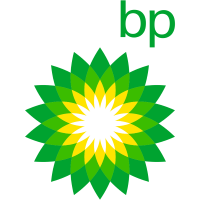¿Cuál es el precio actual de las acciones de BP?
El precio actual de las acciones de BP es US$ 28.60
¿Cuántas acciones de BP están en circulación?
BP tiene 2,711,285,849 acciones en circulación
¿Cuál es la capitalización de mercado de BP?
La capitalización de mercado de BP es USD 77.03B
¿Cuál es el rango de negociación de 1 año para el precio de las acciones de BP?
BP ha negociado en un rango de US$ 27.8227 a US$ 40.40 durante el último año
¿Cuál es el ratio PE (precio/beneficio) de BP?
El ratio precio/beneficio de BP es 0.68
¿Cuál es el ratio de efectivo a ventas de BP?
El ratio de efectivo a ventas de BP es 0.05
¿Cuál es la moneda de reporte de BP?
BP presenta sus resultados financieros en USD
¿Cuál es el último ingresos anual de BP?
El último ingresos anual de BP es USD 211.6B
¿Cuál es el último beneficio anual de BP?
El último beneficio anual de BP es USD 15.24B
¿Cuál es la dirección registrada de BP?
La dirección registrada de BP es 1 ST JAMES'S SQUARE, LONDON, SW1Y 4PD
¿Cuál es la dirección del sitio web de BP?
La dirección del sitio web de BP es www.bp.com/
¿En qué sector industrial opera BP?
BP opera en el sector PETROLEUM REFINING


 Hot Features
Hot Features

